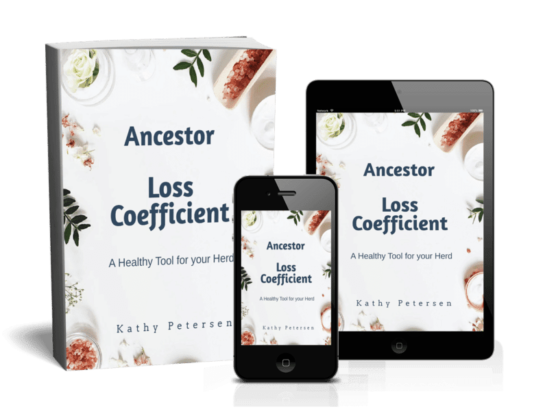
Sign Up
Want to receive a newsletter to learn more about KuneKune pigs and other educational information? Sign up to have them delivered right to your inbox.
We look forwarded to sending you some great info.
New ebook - AVK tool
Ancestor Loss Coefficient Tool
Introducing the new breeder's took Ancestor Loss Coefficient. What is it? How to use it? Learn how this can help you plan your breedings.

Intro from the KuneKune Registry
Never has a KuneKune Registry offered this tool and we are proud to introduce this tool to the KuneKune community. You may find the initials in some areas as AVK or by some ALC. In IKKPS herd books it is defined by AVK.
IKKPS is proud to introduce the Ancestor Loss Coefficient – AVK into the KuneKune Community. This new tool that we mentioned back in October & November 2022 as being a part of our Online Herd Book and was included in our terminology section.

An Introduction into the Ancestor Loss Coefficient – AVK
First, in this article we will provide an introduction into the Ancestor Loss Coefficient (AVK) - a widely used measure of genetic diversity in evolutionary biology. Likewise, this is a new tool that is offered in the IKKPS and into the KuneKune community we wanted to explain more about this tool and how it can be used to improve the genetics of KuneKunes.
Understanding Ancestor Loss Coefficient is not the easiest thing to understand but, we have tried to simplify it as much as possible. As a result, we hope that it helps you to understand it better. Likewise, if you have questions, don't hesitate to reach out to us.
What Is the Ancestor Loss Coefficient Formula?
The Ancestor Loss Coefficient (AVK formula) was developed to calculate the degree of inbreeding or cross breeding occurring through a breeding program. This is based on certain parameters. First, it measures how much genetic material from ancestors is lost across generations. Likewise, predicts how related they are between individuals in future generations by using a combination of mathematical functions, genetic distance matrixes and pedigree-based indexing. The AVK will evaluate the risk posed by ancestral loss for animal populations which are managed for captive breeding programs such as KuneKunes, where it is crucial to maintain diversity even with limited resources.
Created by Dr Brad Hooks the AVK theory when he realized its potential use in animal husbandry practices such as livestock management and conservation genetics programs. However, including those specifically dedicated to dogs and cats alike. His work on understanding how genes flow through generations earned him recognition from scientific circles worldwide. His unique genius made advances in animal science as never achieved!
Edward Cothren furthered the Ancestor Loss Coefficient Theory after extensive research into pig populations around England. So, he noticed simple calculation errors resulting from close relative mating had significant effects on disease risks later in life. Based off his findings from other studies conducted prior, he then applied them towards creating this model. Since its inception, various changes have been made over time including adding measurements for extinction coefficient values. For instance, this further refined calculations for proposed pairings. Likewise allowing evaluations between lines instead just individuals. As a result, making it much easier to assess an entire program rather than individually assessing animals one at a time which would be quite manual labor-intensive manner.
What Are Benefits of Ancestor Loss Coefficient for KuneKune Breeders?
First, the use of AVK tool gives KuneKune breeders the assurance that they are making wise decisions when it comes to their animals’ genetics. Likewise, helps them plan when choosing pairings. So, it helps to always preserving genetic diversity within their population. Additionally, this algorithm also provides insight into potential risks associated with highly related pairs over multiple generations. Also, highlighting potential areas needing attention to ensure long-term success. As a result, this also considered short term objectives such as litter sizes, conformation etc.
Implementing this use of AVK methods KuneKunes breeders can examine how much a gene pool loss could result if pairing occurs across each subsequent generation. Likewise, this is safeguarding against accidental incestual mating & unwanted deformities arising due to inbreeding and crossing breeding. All the while having greater productivity efficiency & rarity values attributed to blood line, thus increasing demand.
What Are Common Reasons for High Levels of Relatives in a KuneKune Breeding Program and How Can This be Avoided Using the AVK Tool?
First, common causes include high number of related relatives amongst KuneKunes ancestors. This has been caused by improper record keeping by breeders in the past from a possible lack knowledge, mating status or failure to identity parent being bred properly. Likewise, parents possess common recessive traits no being identified prior to breeding. Most importantly, it is related to only having eighteen original pigs that were available to begin the original breeding herd in New Zealand to prevent the breed extinction. Finally, it occurred in the USA due to a sparse number of original animals imported to begin the breeding program here in the USA. At that time, it was necessary.
As a result, all these issues can be solved with utilizing KuneKune registries herd books that offer this feature and proper trial breeding utilization. Watching for ancestor coefficient equations to make accurate predictions in relationships between different target pigs. Thus, avoiding unsuspected mix-ups and facing awful consequences, latter option being most reliable since it allows herd books to track actions with less effort & cost than former approaches.
Significant Factors That Influenced Development of AVK Model?
A variety factors played key roles in establishing ancestor loss coefficient model namely technology advancements, combining advanced database applications, field data collection allowing rapid compilations, large scale of accurate pedigrees, compiling descendant coefficients significance is becoming recognized as a need to conserve unique gene pools.
What Are the Benefits of Ancestor Loss Coefficient for KuneKune Breeders?
Monitor your genetics and make informed decisions about pairing animals within their programs by using the AVK. By using the AVK, KuneKune breeders can track the level of inbreeding or relatedness of each ancestor within a pedigree as well as evaluate how it may affect future generations if pairings remain unchanged. Benefits associated with this process include increased genetic diversity, reduced risk of inherited diseases, improved fertility rates among offspring, and more uniformity across litters that ensure higher quality livestock overall. Furthermore, since Kunes are known for displaying unique traits such as wattles that hang below their jowls; desirable qualities - breeders can better maintain these features when monitoring lineages properly.
Why use the AVK Theory?
Using the AVK has benefits that are numerous for KuneKune breeders as it allows them to ensure that their populations remain diverse and valuable into future generations. Set acceptable levels of ancestor loss coefficient according to individual goals, the breeder can maintain or improve the overall health and performance of their program while preserving its genetic integrity over time.
When too many relatives are involved within a breeding population, elevated levels of relatedness can increase potentially detrimental inherited traits instead desirable qualities; this makes an ancestor loss coefficient an extremely useful tool for KuneKune breeders who want keep track of genealogical associations while selecting only the strongest specimens for reproduction cycles. Especially if both parents have low levels AVK scores compared to other animals within their lineages. Then they would be an optimal mating choice due lower risks associated with hereditary disease or defects.
Use this model then breeders can identify animals that may be too closely related for comfortable breeding pairs with minimal amount of guesswork as well as help them avoid problems associated with inbreeding depression (e.g., reduced fertility. In addition to its use for mitigating risks associated with close relative mating in domestic animals like KuneKunes, it has been used extensively within conservation genetics studies on wild species where there is potential impact due to loss of genetic diversity through too many closely related mating occurring over generations.
From our Herd Book Programmer: (Cocker Spaniel Breeder)
With regards to genetic diversity, more intuitive to me is the concept of "ancestor loss". We are all aware that in looking at a pedigree, if we see all unique ancestors then we think "diversity"; whereas once we start seeing ancestors repeated in a pedigree we start to think "inbreeding" and loss of genetic diversity.
Now obviously if you go back far enough - even in human genealogy - you start to get repeated ancestors. But the more unique ancestors there are, the more "mixed" are the genes. Mixing genes to get new combinations is the whole point of sexual reproduction.
So, is there a way to "measure" ancestor loss? Yes, there is ... and it is remarkably simple. For a particular number of generations, just count all the different ancestors and divide by the number of ancestors. This is called the "Ancestor Loss Coefficient" (ALC or in our herd book AVK). For example, in a three-generation pedigree (parent, grandparents, and great-grandparents) there are 14 (2+4+8) ancestors. If all the ancestors are all different, the AVK will be 1; if any ancestors are repeated, the AVK will be less than 1. The more repeated ancestors there are, the smaller the AVK.
Just like COIs, AVKs are dependent on the number of generations of the pedigree used in the calculation. So, when talking about a particular AVK, one must also mention how many generations were used in the calculation of the AVK.
How as a programmer he helped make AVK a reality
As others may want to make use of the concept of Ancestor Loss Coefficient, I have added software to my online database pedigree system to calculate the Ancestor Loss Coefficient for an individual dog, and for a "test breeding" of two dogs in my database. For duplicated dogs in a pedigree, my software also indicates their contribution to a dog. My software allows one to calculate the AVK for up to ten generations provided a complete pedigree is available.
This is adjustable in the software and is based on 10 generations which is the standard recommended. COIs are also adjustable but, 10 generations are the standard.
In Conclusion:
Through this blog post, we have discussed the Ancestor Loss Coefficient formula and the benefits it provides for KuneKune breeders. First, we discussed what ancestor loss coefficient is. Second, we talked about who invented the theory and how it affects breeding programs. Third, we explored common reasons for elevated levels of relatives in a KuneKune breeding program as well as significant factors that influenced development of the ancestor loss coefficient model. As a result, by using this guide, KuneKune breeders will be able to effectively manage their programs to create a healthy genetic pool.
To my knowledge, IKKPS is the first to offer this amazing new tool to the KuneKune community. It was included in our original online herd book which was created in October 2022. It is our hope that you enjoy this additional tool to make your breeding decisions.
Registry Office
17500 Hamilton Arms Court Dewitt, VA 23840